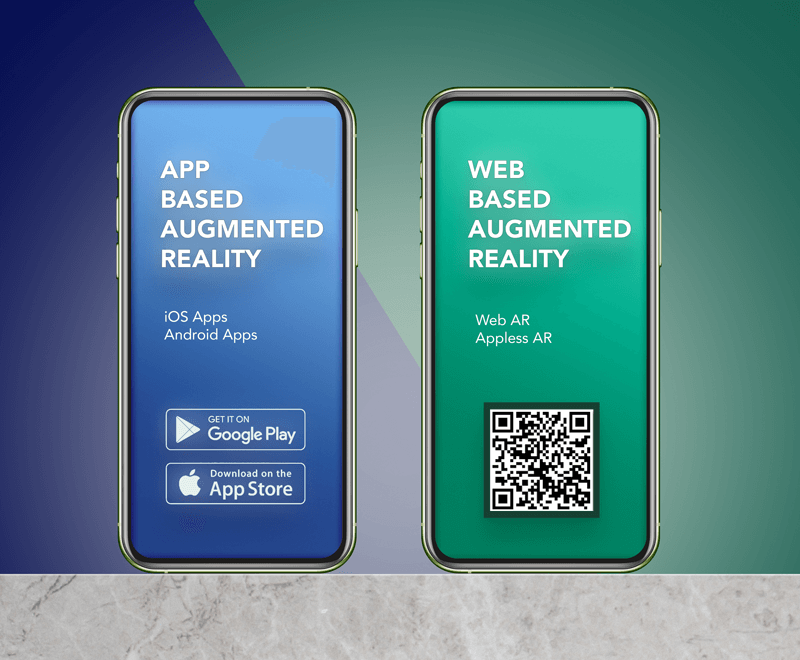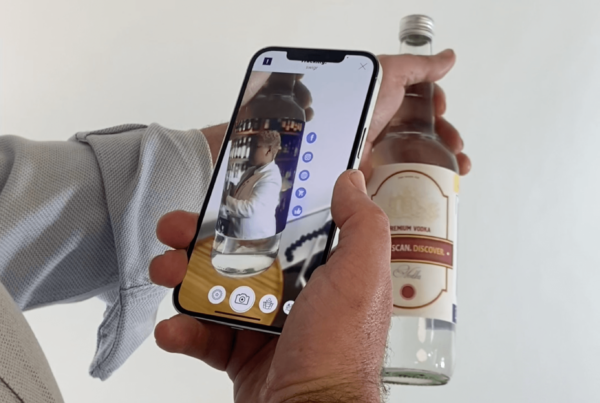
When it comes to augmented reality, there are two main ways to go: Appless AR and App-based AR. They both work from smartphones, and they both present augmented reality.
The thing is, they’re not the same – appless AR uses a web browser, instead of an App to power augmented reality, which is simpler, but comes with some heavy trade-offs.
Depending on a business’ specific needs, either one may work better.
Knowing the difference between the two options could have a big impact on your next AR project.
App-based AR offers higher quality
In terms of quality, App-based AR typically offers a sharper and more realistic image than Appless AR.
This is because app developers have more control over how the augmented reality content looks and functions within their app. This allows app developers to better optimize the augmented reality content to fit their needs.
Appless AR is limited by web browsers, and the lower quality is because browsers generally have less processing power and graphics capabilities than dedicated apps.
It can only function at the level of a browser and can only draw upon the processing power that a browser can access. The impact tends to be minimal with simple augmented reality, but for complex AR, the quality of the experience can be noticeably lower.
Appless AR is more convenient
On the other hand, Appless AR offers speed and convenience.
Users don’t have to download an app to see the augmented reality content; they can simply access it through the browser on their phone.
Since this AR does not require downloading an App, users can save space on devices with limited storage.
Appless AR has stability issues
This is where appless AR has some significant downsides.
Generally, appless AR is much less stable than app-based AR. This is because web browsers are sometimes unable to handle the high demand for augmented reality content, which can result in glitches and crashes.
The most common effect is ‘wobble’ where the virtual content has a tremor, or shimmer to it, even though the real world is still.
Appless AR loses tracking
This might sound like a small issue, but for users, augmented reality that loses tracking creates a frustrating, interrupted experience, that greatly reduces the excitement of the moment.
Losing tracking means that the augmented reality display has lost its anchor point – the place where it is ‘virtually attached’ and usually means the experience completely stops, and users have to start again.
This is a common problem for Appless AR, and tends to happen in two scenarios:
- When users move their phones while viewing Appless AR, or
- When the object target or image target moves
App-based AR rarely loses tracking
App-based augmented reality, on the other hand, performs remarkably well in both cases. Losing tracking can still happen, but it’s pretty rare, unless a person moves away from the target quickly or far enough.
See the unwavering tracking demonstration of App-based augmented reality, from Immertia
…its highly unlikely that brands will take to appless augmented reality any time soon. The limitations far outweigh the convenience…
Social media sharing is still a problem for Appless AR
Social Media is (still) a problem.
Because appless AR depends on a browser, it’s important that every browser is compatible. The main ones Chrome, and Safari are generally compatible with all versions of appless AR.
But social media channels like Facebook and LinkedIn use their own browsers when links are opened from their sites, and that’s a bit of an issue. Up till recently opening appless AR in one of those browsers would not work. Ever.
Fortunately, everyone’s working together to get the compatibility issue sorted, and there’s a lot of headlines saying that it’s been solved, but that’s not the case, there are many situations out there for which this is still problematic.
“As you know, you should copy and paste this link into your browser as LinkedIn is not friendly to immersive experiences” – this was a message we received from a web AR team, in 2022, sharing some concepts with our team.
For your situation
So, which is better: app-based AR or web-based AR?
The answer depends on the needs of the business. App-based AR is more customizable and offers better quality than Appless AR, making it a good choice for businesses that want high-quality augmented reality experiences.
However, Appless AR is more convenient than app-based AR, making it a good choice for businesses that need to quickly deploy an AR experience with minimal setup time.
Ultimately, it is important to consider both options before deciding which is best for a particular situation.












